Poetry in stone: The Cathedral of St. Dmitry in Vladimir

Vladimir. Cathedral of St. Dmitry, south facade, upper tier. March 6, 1972.
William Brumfield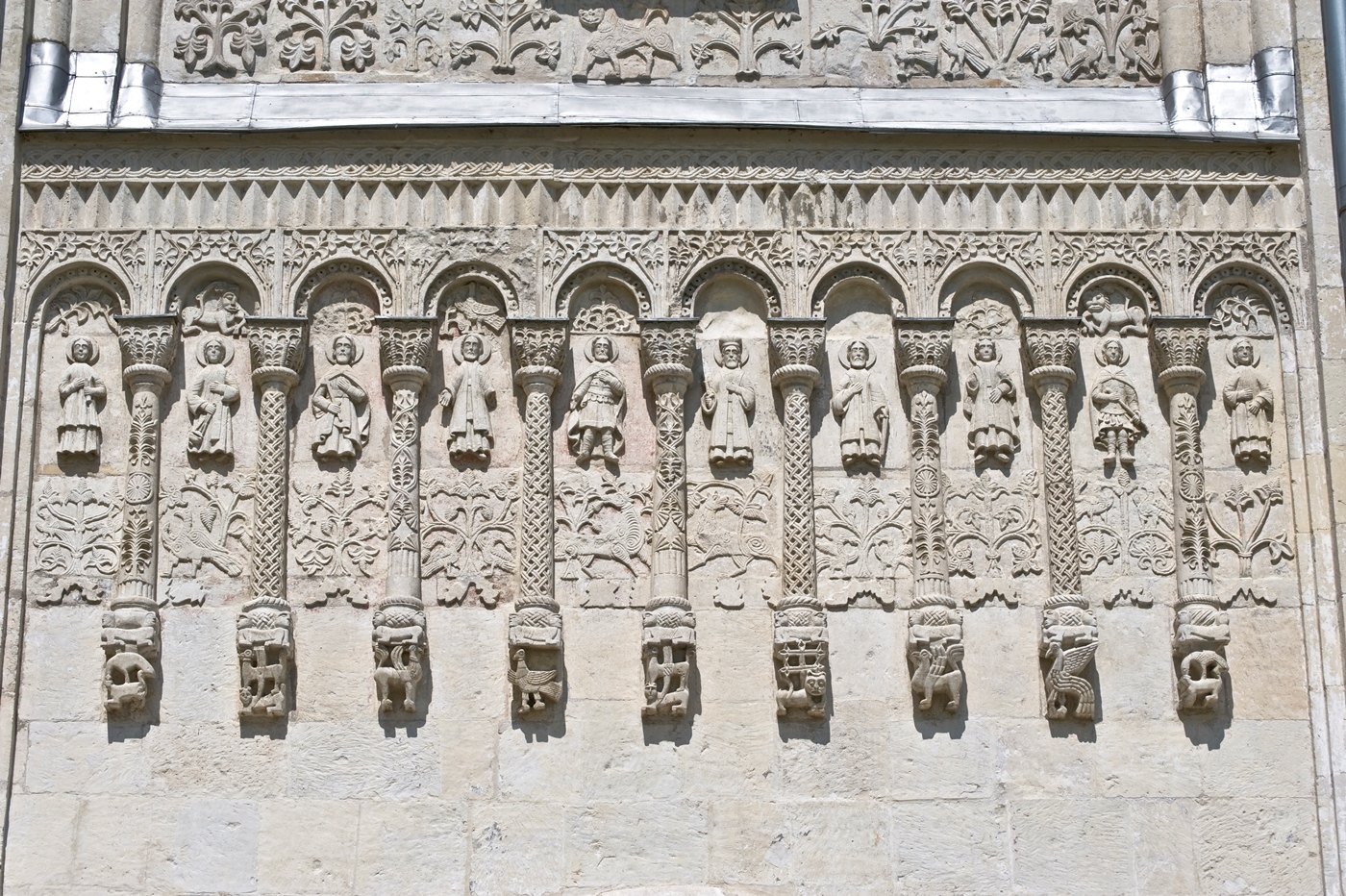 Vladimir. Cathedral of St. Dmitry. Arcade frieze at center of south facade. July 18, 2009. / Photo: William Brumfield
Vladimir. Cathedral of St. Dmitry. Arcade frieze at center of south facade. July 18, 2009. / Photo: William Brumfield
At the beginning of the 20th century the Russian chemist and photographer Sergei Prokudin-Gorsky invented a complex process for vivid, detailed color photography (see box text below). His vision of photography as a form of education and enlightenment was demonstrated with special clarity through his photographs of medieval architecture in historic settlements northeast of Moscow such as Suzdal and Vladimir, which he visited in the summer of 1911 My own visits occurred over a period of decades from 1972 to 2009.
The fortress of Vladimir was established in 1108 on the Klyazma River by Vladimir Monomakh, who ruled as Grand Prince in Kiev from 1113 to 1125. His reign is considered one of the most productive in the history of Kievan Rus, and with his guidance the area around Vladimir became a new center of political and economic power in the lands of the eastern Slavs.
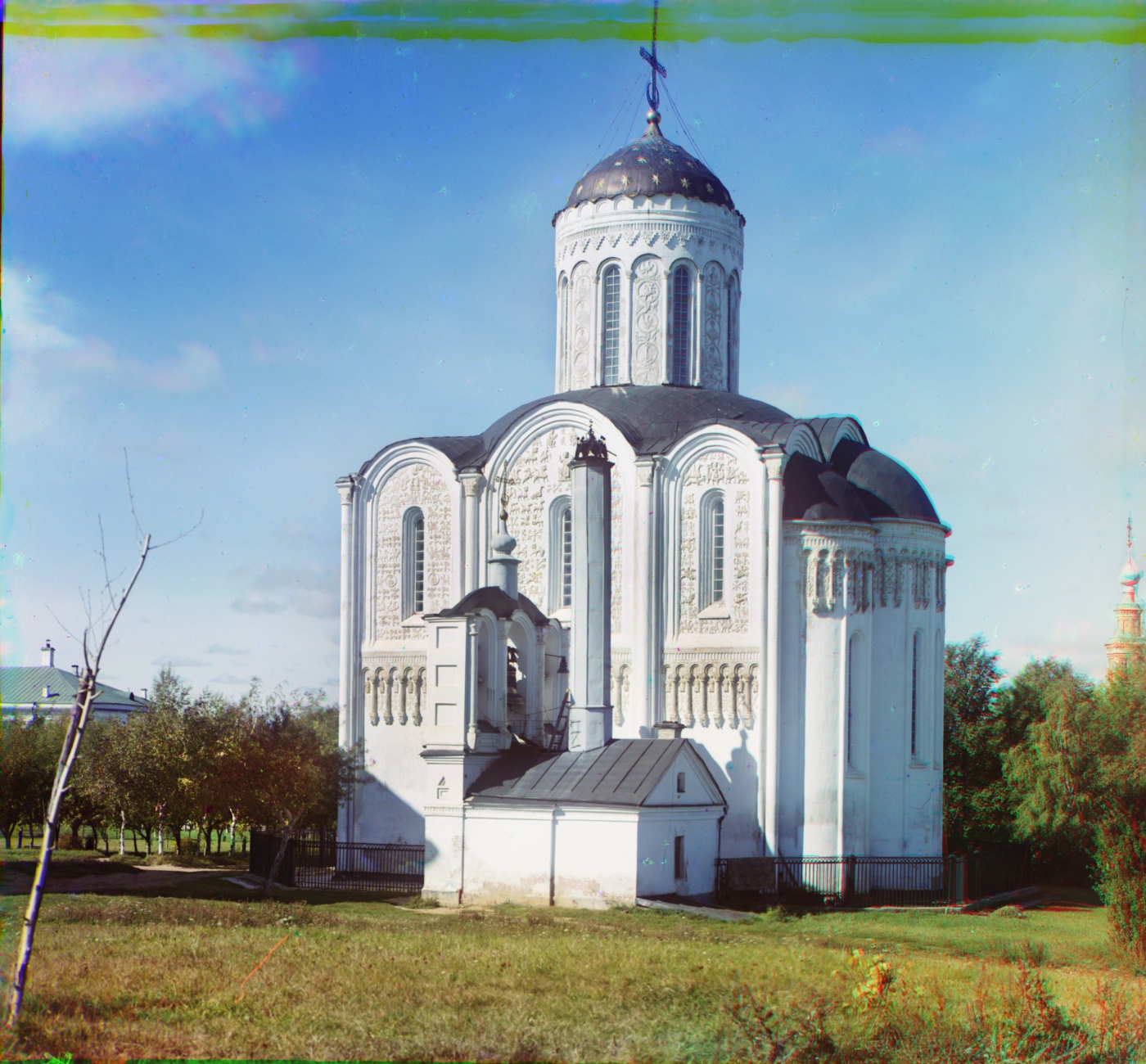 Vladimir. Cathedral of St. Dmitry, south view with belfry & service building. Summer 1911. / Photo: Sergei Prokudin-Gorsky
Vladimir. Cathedral of St. Dmitry, south view with belfry & service building. Summer 1911. / Photo: Sergei Prokudin-Gorsky
In the second half of the 12th century, under Monomakh’s descendants, Vladimir and surrounding settlements witnessed a surge in church construction with a form of limestone known as white stone. A notable example is the Cathedral of St. Dmitry (St. Demetrius of Thessalonika), built between 1194 and 1197 as part of a palace ensemble of Vsevolod (III) Yurevich, grandson of Monomakh and ruler of Vladimir from 1174 to 1212.
Carvings of history
Vsevolod understood the uses of architecture in projecting authority, and he supported the construction of stone churches not only as an expression of religious devotion, but also as a statement of power. The carvings on the facades of the St. Dmitrii Cathedral are a direct expression of that power, beginning with a depiction of the Biblical King David on the upper part of the west façade (the main entrance). The south façade includes Alexander the Great and a central figure now identified as King Solomon.
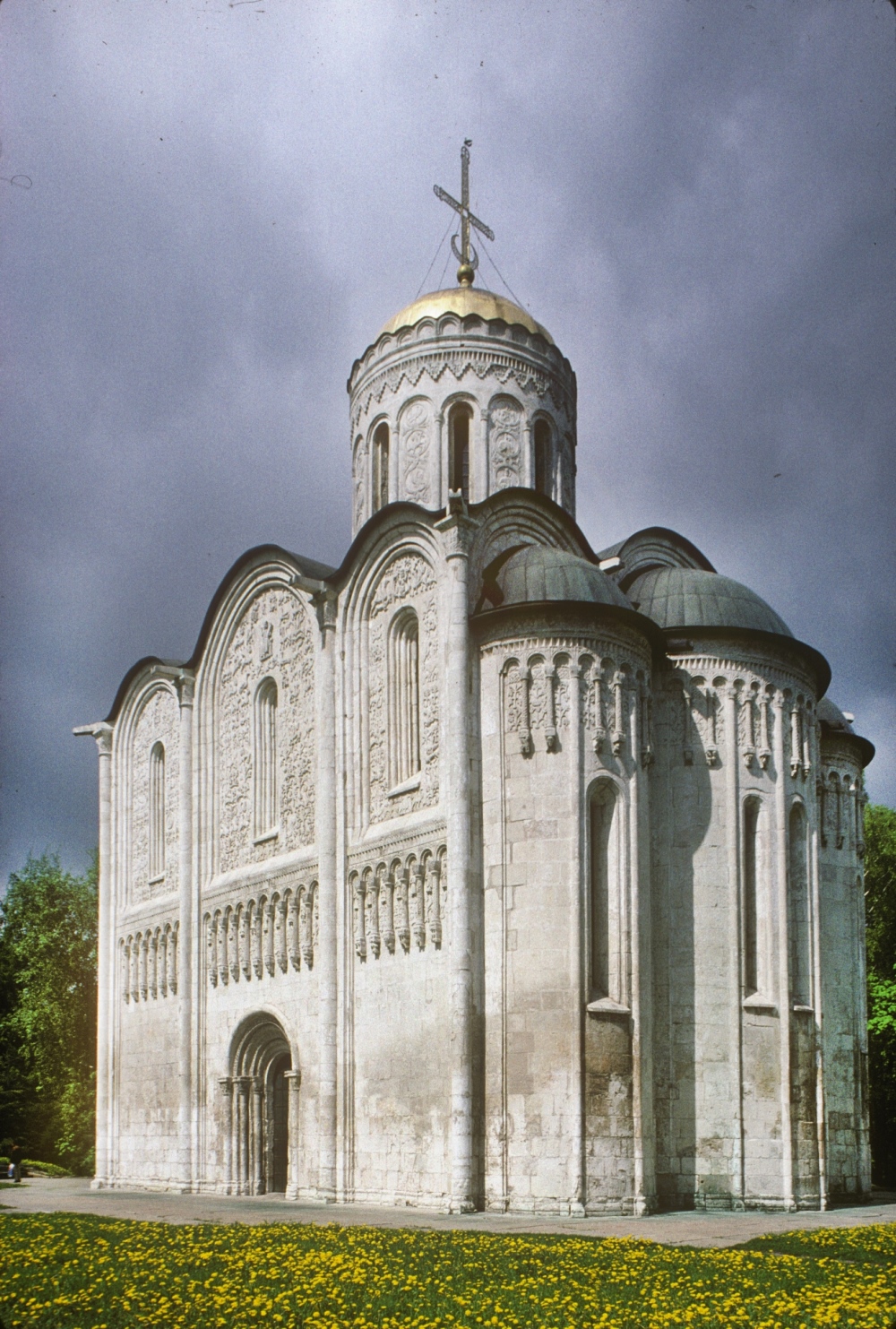 Vladimir. Cathedral of St. Dmitry, southeast view. May 25, 1998. / Photo: William Brumfield
Vladimir. Cathedral of St. Dmitry, southeast view. May 25, 1998. / Photo: William Brumfield
In addition to these iconic depictions of divinely anointed rulers, the carvings include representations of Christ, as well as an array of saints and personages from the Old Testament. Many of the carved blocks depict ornamental figures or heraldic motifs such as lions. Of special interest is the arcade frieze along the middle of the structure. The spaces between the carved attached columns serve as niches for statues of saints.
The origins of this elaborate display have been the subject of much discussion. Romanesque architecture and sculpture in central Europe are a probable sources, although the specifics of this transfer are unknown. The influence of carved church facades in the medieval Caucasian kingdoms of Georgia and Armenia has also been suggested. The glories of Byzantine culture form another likely source, for Vsevolod had spent several years in Constantinople before his return to rule Vladimir principality.
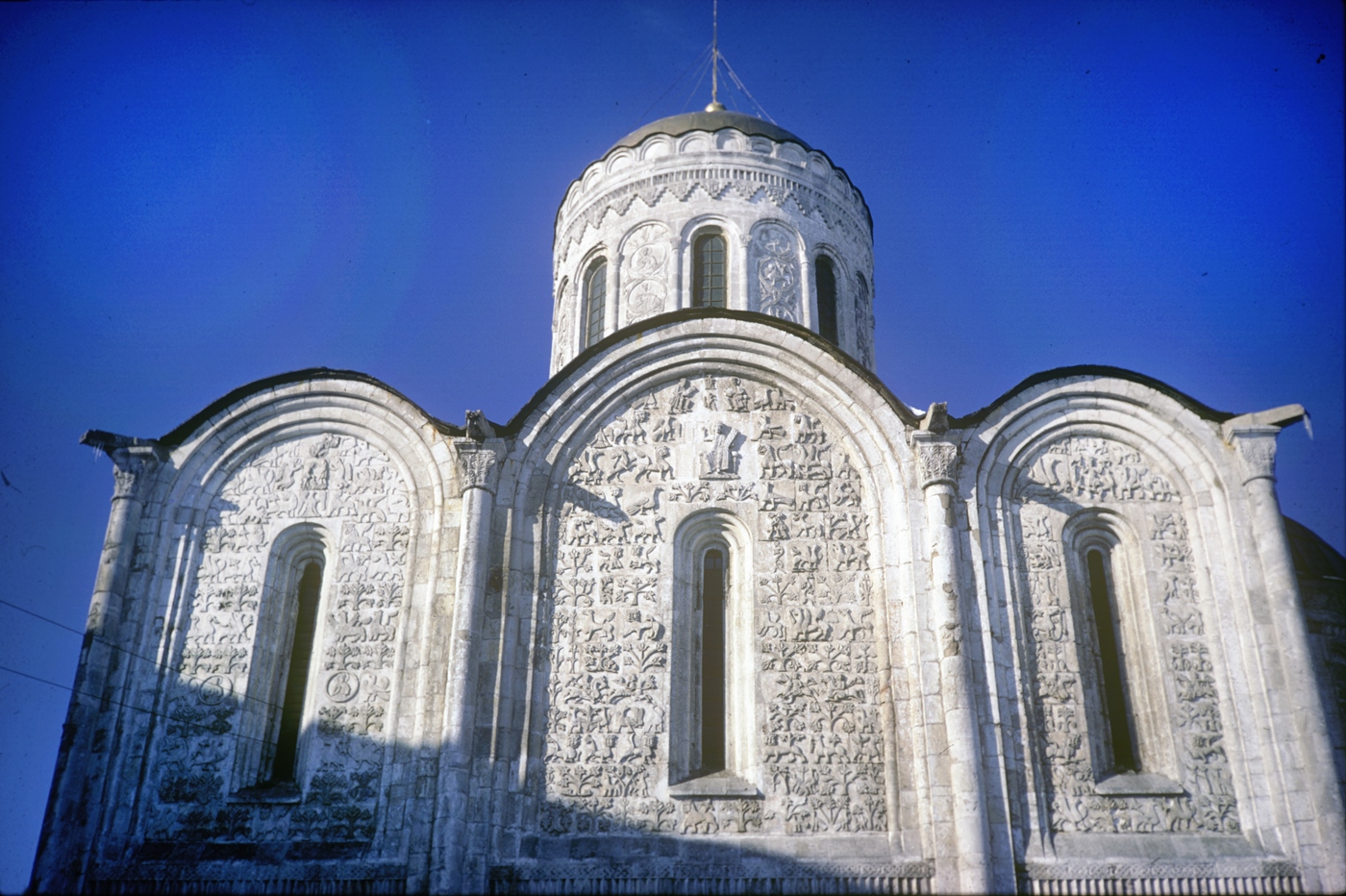 Vladimir. Cathedral of St. Dmitry, south facade, upper tier. March 6, 1972. / Photo: William Brumfield
Vladimir. Cathedral of St. Dmitry, south facade, upper tier. March 6, 1972. / Photo: William Brumfield
Less than a half century after the completion of the cathedral, the Vladimir principality was overwhelmed by a cataclysmic Mongol invasion. In late February 1238, the city was captured and sacked with great loss of life. The grand prince at that time, Vsevolod’s son Yury, was killed a few days later in a final battle with the Mongol armies.
Reconstruction and reconception
Despite reparis and modifications over the next six centuries, the cathedral’s basic form remained. A turning point occurred in 1834 during a visit of Tsar Nicholas I to Vladimir. Alarmed by the dilapidated appearance of the monument, the tsar ordered a restoration of the shrine to its “original form.”
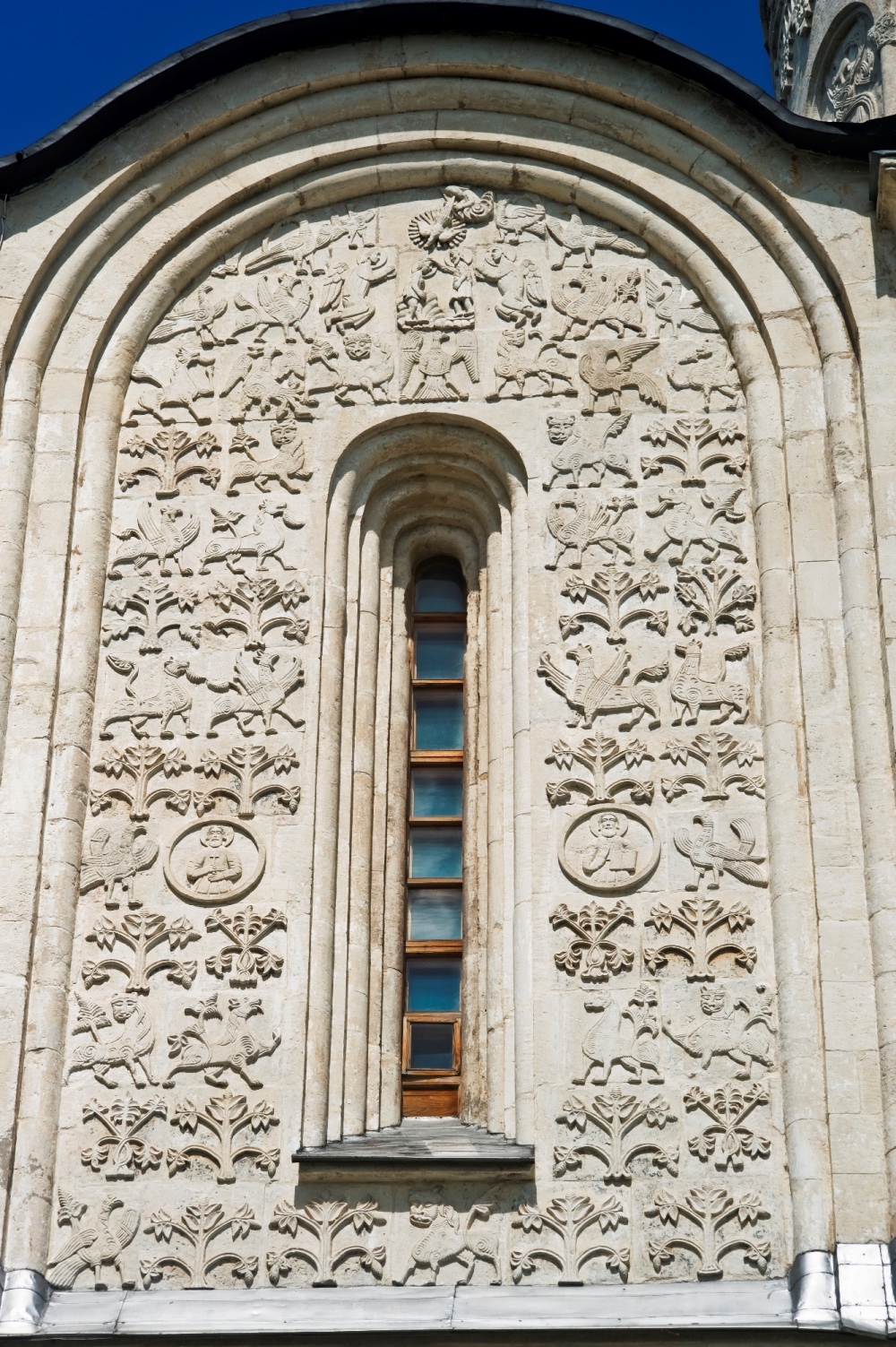 Vladimir. Cathedral of St. Dmitry, south facade, left bay with depiction of Baptism of Christ (Epiphany). July 18, 2009. / Photo: William Brumfield
Vladimir. Cathedral of St. Dmitry, south facade, left bay with depiction of Baptism of Christ (Epiphany). July 18, 2009. / Photo: William Brumfield
That form, however, was determined with less than scholarly rigor, with the consequent demolition in 1837-39 of parts deemed to be ancillary. These included a bell tower attached to the northwest corner, as well as an exterior gallery that contained stairs to the upper level and buttressed the structure on the south, west and north sides. After this removal, many stone blocks were replaced with new carvings (particularly in the arcade friezes), and the order of some of the blocks was rearranged.
These modifications enhanced the perception of the exterior carving, but certain valuable details were lost for lack of proper documentation. A further renovation of the interior in 1840-1847 led to the loss or overpainting of early medieval frescoes. In 1883 the installation of a calorific heating system (for winter services) led to the construction of a service building with a tall chimney just to the south of the cathedral. This small structure, which also supported a belfry, is clearly visible in the Prokudin-Gorsky photograph.
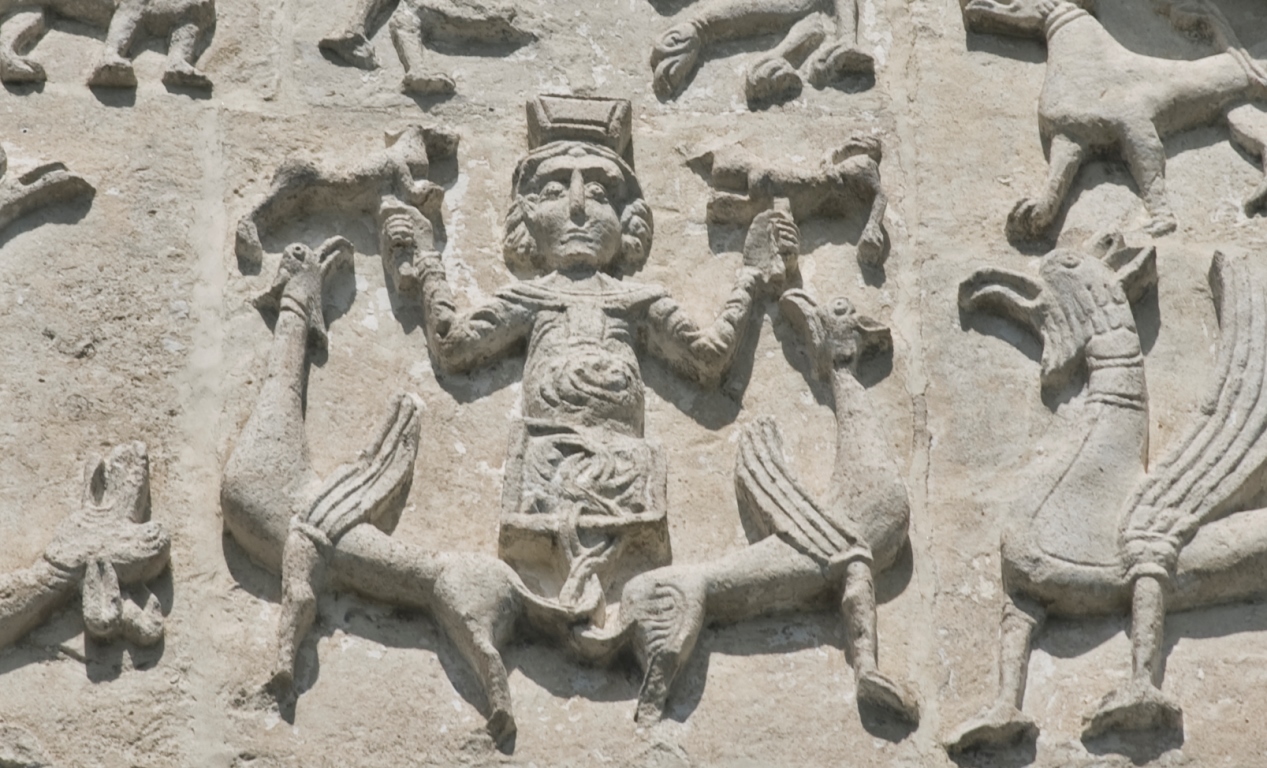 Vladimir. Cathedral of St. Dmitry, south facade, right bay, Apotheosis of Alexander the Great. July 18, 2009. / Photo: William Brumfield
Vladimir. Cathedral of St. Dmitry, south facade, right bay, Apotheosis of Alexander the Great. July 18, 2009. / Photo: William Brumfield
After the 1917 Revolution, the cathedral was studied by the prominent art historian Igor Grabar, who in 1918 uncovered some of the most valuable late 12th-century frescoes. In 1919, it was converted to a museum, but progressive deterioration threatened its survival as removal of the exterior galleries had weakened the structure. So grave was the danger to this major monument that measures were taken to stabilize the foundation in 1941, even as the first desperate months of the war raged.
The unique limestone carving was also damaged by decades of industrial pollution and acid rain. After years of study, the exterior was given a special protective coating at the turn of this century. A comparison of my photographs from 1972 to those from 2009 show the difference in the surface.
Despite history’s turbulence and revolutionary change, the sculpted facades of the Cathedral of St. Dmitry have served for over 900 years as a testimony to the inspiration of anonymous medieval artisans. The cathedral is now on the UNESCO World Heritage List.
 Vladimir. Cathedral of St. Dmitry, southwest view. July 18, 2009. / Photo: William Brumfield
Vladimir. Cathedral of St. Dmitry, southwest view. July 18, 2009. / Photo: William Brumfield
In the early 20th century the Russian photographer Sergei Prokudin-Gorsky invented a complex process for color photography. Between 1903 and 1916 he traveled through the Russian Empire and took over 2,000 photographs with the new process, which involved three exposures on a glass plate. In August 1918 he left Russia with a large part of his collection of glass negatives and ultimately resettled in France. After his death in Paris in 1944, his heirs sold his collection to the Library of Congress. In the early 21st century the Library digitized the Prokudin-Gorsky Collection and made it freely available to the global public. A number of Russian websites now have versions of the collection. In 1986 the architectural historian and photographer William Brumfield organized the first exhibit of Prokudin-Gorsky photographs at the Library of Congress. Over a period of work in Russia beginning in 1970, Brumfield has photographed most of the sites visited by Prokudin-Gorsky. This series of articles will juxtapose Prokudin-Gorsky’s views of architectural monuments with photographs taken by Brumfield decades later.
Read more: Suzdal’s Nativity Cathedral: From Prokudin-Gorsky to the present
If using any of Russia Beyond's content, partly or in full, always provide an active hyperlink to the original material.
Subscribe
to our newsletter!
Get the week's best stories straight to your inbox